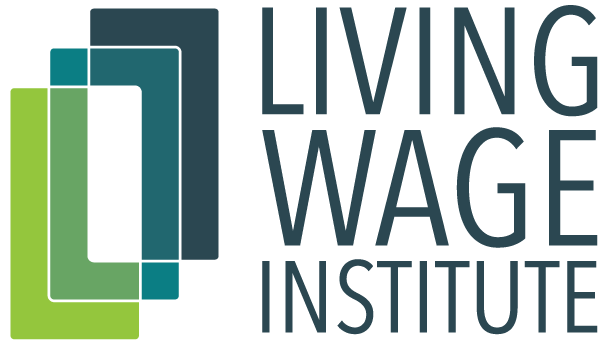



For further information, please visit the FAQs and Methodology pages or submit a question or request through the Contact page.
© 2024 Dr. Amy K. Glasmeier and the Massachusetts Institute of Technology
SIGN INJuly in Arizona is almost unbearable. Triple-digit temperatures ground air service and dust clouds the size of cities sweep across the land. Like a whirlwind rising off the desert floor, the once flat line in the state’s May infection rate is experiencing a massive upward spike in Coronavirus cases. Arizona has a higher case rate than any country in Europe and has more confirmed cases than the entire country of Brazil [1]. While the state is only now experiencing a significant surge in cases, health crises are not new. This local spotlight will focus on one Arizona community that early on was devastated by the virus.
The Navajo Nation occupies the northwest corner of the state. The reservation is the largest in the country by size and population, spanning three states and home to over 150,000 people [2]. Poor living conditions on the reservation shouldn't be surprising to anyone familiar with the United States' historical treatment of indigenous peoples. Extreme poverty, high unemployment, poor housing, and lack of access to essential goods and services such as running water, medical clinics, and poor-quality housing are all far too familiar in the Navajo Nation. These factors prefigured the dramatic rise in May's infection rates, surpassing that of New York, the infamous viral hotspot [3].
A History of Injustice and Neglect
Decades of forced relocation and racist federal policies left many tribes strapped for resources. With a per capita income of $10,220 (about a third the national level), the Navajo Nation's tax base is meager compared with other states [4]. Mining and tourism are the economic engines of the reservation [5]. Both industries are subject to wide swings in commodity prices and economic downturns. Fluctuating demand cycles in both industries generate volatility and sporadic employment. With limited tax revenues, the tribal government lacks the resources to overcome the Pandemic. And in fact, the very sectors that served as the Nation's lifeblood are instrumental in spreading the virus.
The effects of tourism on the spread of disease are self-evident. Although the tribal government closed its border (in an advisory, non-enforceable manner) [6], the shutdown and testing only began in mid-March. Travelers going in and out of the reservation were possibly spreading the disease for days or weeks prior [7].
Over the long run, however, mining has extracted a much larger toll on the health of the Navajo. For decades, mines were contaminating local water supplies. Over 500 abandoned uranium mines leftover from the Cold War seep toxic chemicals and radioactive material into underwater springs and reservoirs [8,9]. Water resources are scarce, and local water sources are vital to the reservation, where more than a third of its population lacks running water at home [10].
Water Scarcity in the COVID Era
The lack of access to water exacerbates the spread of Coronavirus. Back in March, the whole country was inundated with messages to stay home and wash your hands. With everyone at home, residential water usage surged nationwide [11]. The average American already consumes around 100 gallons of water a day; meanwhile, the ordinary Navajo lives off of 7 [12]. Better hygiene is more important than ever, but without access to clean running water, many on the reservation cannot readily increase their water usage. Once the taps run dry, they have to go out to buy more water. And so, to avoid the risk of leaving their homes and exposing themselves to the disease, the Pandemic forces thousands to choose between clean hands and potable water to drink.
Getting water to the affected communities is no easy task. The fight against COVID and the tourism industry's shutdown tied up much of the tribe's emergency funds [13]. The Indian Health Service (IHS) under the US Department of Health and Human Services estimates that more than $2.7 billion is required to provide water infrastructure to homes on the Nation's Indian reservations. Being the largest and most populous, the Navajo reservation will need a large portion of those funds. To date, Congressional appropriations to the IHS represent only a fraction of tribal requests, giving under $99.4 Million (under 4%) in 2016 [14]. The absence of federal support leaves the Navajo to deal with the issues on their own.
A More Hydrated Reservation on the Horizon
In an ironic twist of fate, the water scarcity precipitated by the Pandemic may have put the Navajo Nation on track to fixing it. After initially delaying CARES Act relief funds to tribal governments, the Navajo Nation received a $600 million federal grant and now plans to make substantial investments in spreading water access [15]. Half of the $600 million will go directly to domestic water supply construction to provide clean water for hygiene and household. An additional $150 million will go towards "powerline and solar infrastructure" to supply electricity to pump water to homes [16]. COVID finally forced Congress to assist the long-neglected Navajo. There is a possibility the reservation will emerge from the Pandemic better equipped with needed infrastructure.
Overall the Navajo Nation’s recovery displays moderate success, especially given the lack of resources at its disposal to effectively combat the virus.
Since its peak in May, the Navajo Nation has controlled the virus's spread, with a 7-day average of around 40 new daily cases [17]. The lessons learned during the Pandemic are informing tribal plans of how to avoid problems of water access. Still, the second wave of infections now sweeping across the American Sunbelt is making the Navajo Nation's health once again uncertain.
Sources:
1. https://www.washingtonpost.com/health/how-arizona-lost-control-of-the-epidemic/2020/06/25/f692a5a8-b658-11ea-aca5-ebb63d27e1ff_story.html
2. https://web.archive.org/web/20140611164422/http://azcia.gov/Documents/Links/DemoProfiles/Navajo%20Nation.pdf
3. https://www.theverge.com/2020/7/6/21311211/navajo-nation-covid-19-running-water-access
4. https://www.minneapolisfed.org/indiancountry/resources/reservation-profiles/navajo-nation-reservation
5. http://navajobusiness.com/fastFacts/Overview.htm
6. https://www.azcentral.com/story/news/local/arizona/2020/03/18/navajo-nation-closes-visitors-response-coronavirus/2865324001/
7. https://www.phoenixnewtimes.com/news/member-of-the-navajo-nation-tests-positive-for-coronavirus-11458200
8. https://www.epa.gov/navajo-nation-uranium-cleanup/cleaning-abandoned-uranium-mines
9. https://www.ncbi.nlm.nih.gov/pmc/articles/PMC3222290/
10. https://www.outsideonline.com/2413938/navajo-nation-coronavirus-spread-water-rights
11. https://www.nbcmiami.com/news/local/changing-climate-south-florida/impacts-of-water-usage-during-coronavirus-pandemic/2233103/
12. https://www.npr.org/sections/codeswitch/2015/01/06/374584452/for-many-of-navajo-nation-water-delivery-comes-monthly
13. https://news.harvard.edu/gazette/story/2020/05/the-impact-of-covid-19-on-native-american-communities/
14. https://naturalresources.house.gov/imo/media/doc/House%20Water%20Report_FINAL.pdf
15. https://navajotimes.com/reznews/pipe-dreams-could-coronavirus-finally-bring-water-to-rez/
16. https://www.opvp.navajo-nsn.gov/Portals/0/FILES/PRESS%20RELEASES/2020/Jun/FOR%20IMMEDIATE%20RELEASE%20-%20Passage%20of%20the%20Navajo%20Nation%20CARES%20Act%20legislation%20is%20a%20victory%20for%20the%20Navajo%20People.pdf
17. https://navajotimes.com/coronavirus-updates/covid-19-across-the-navajo-nation/